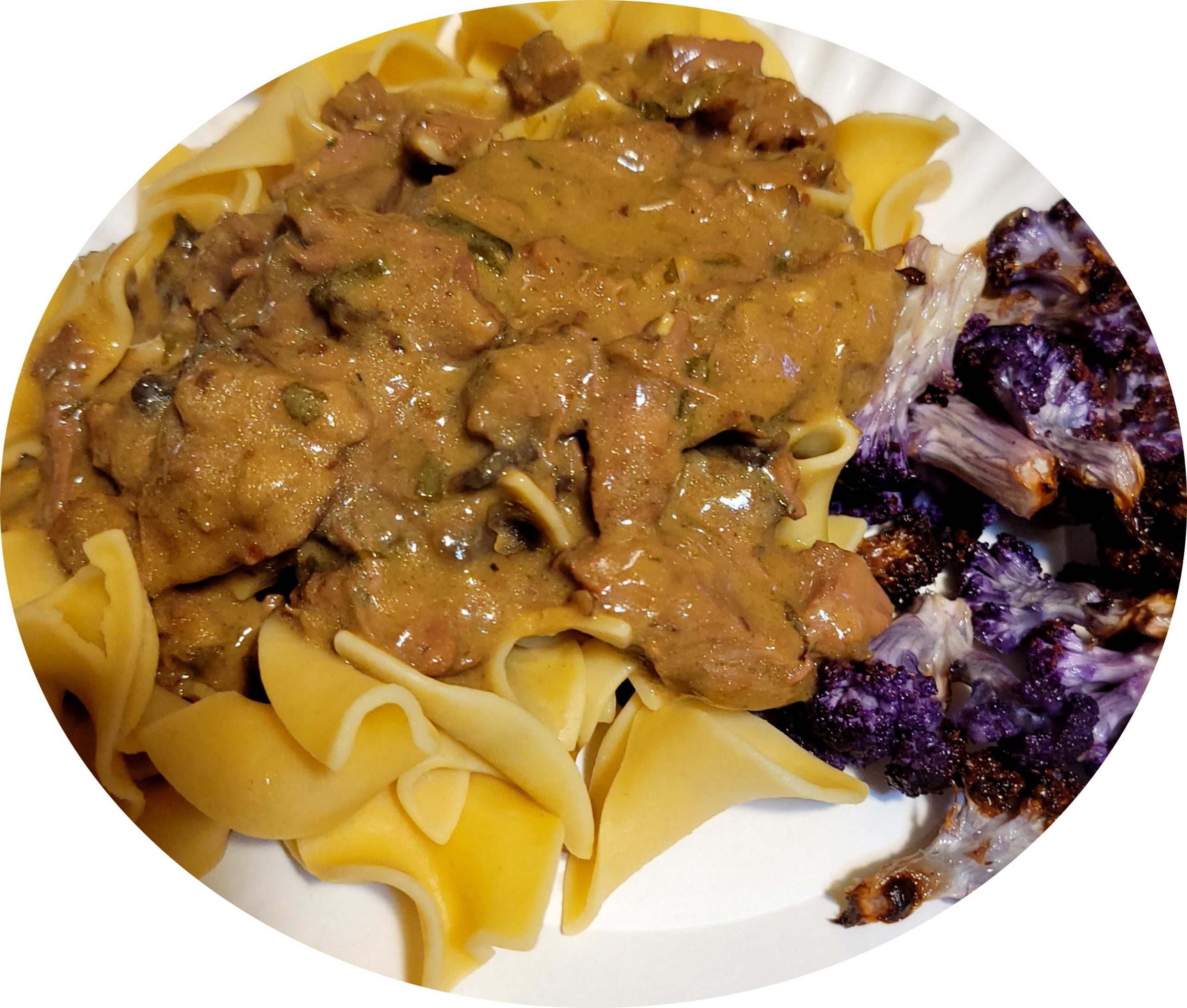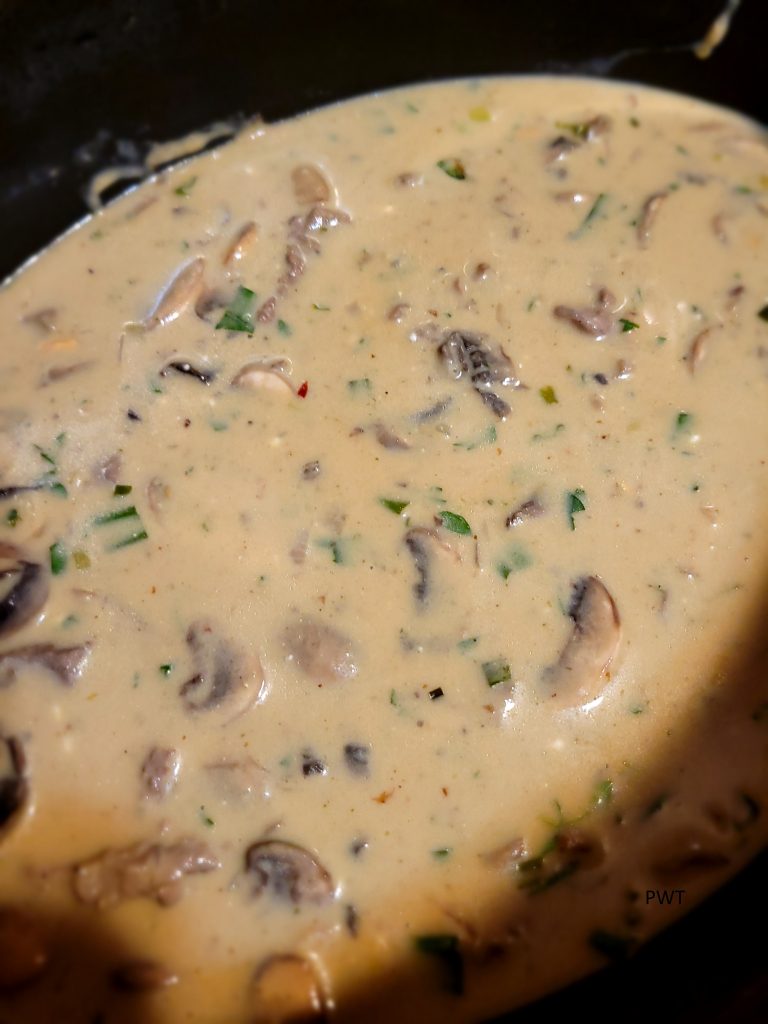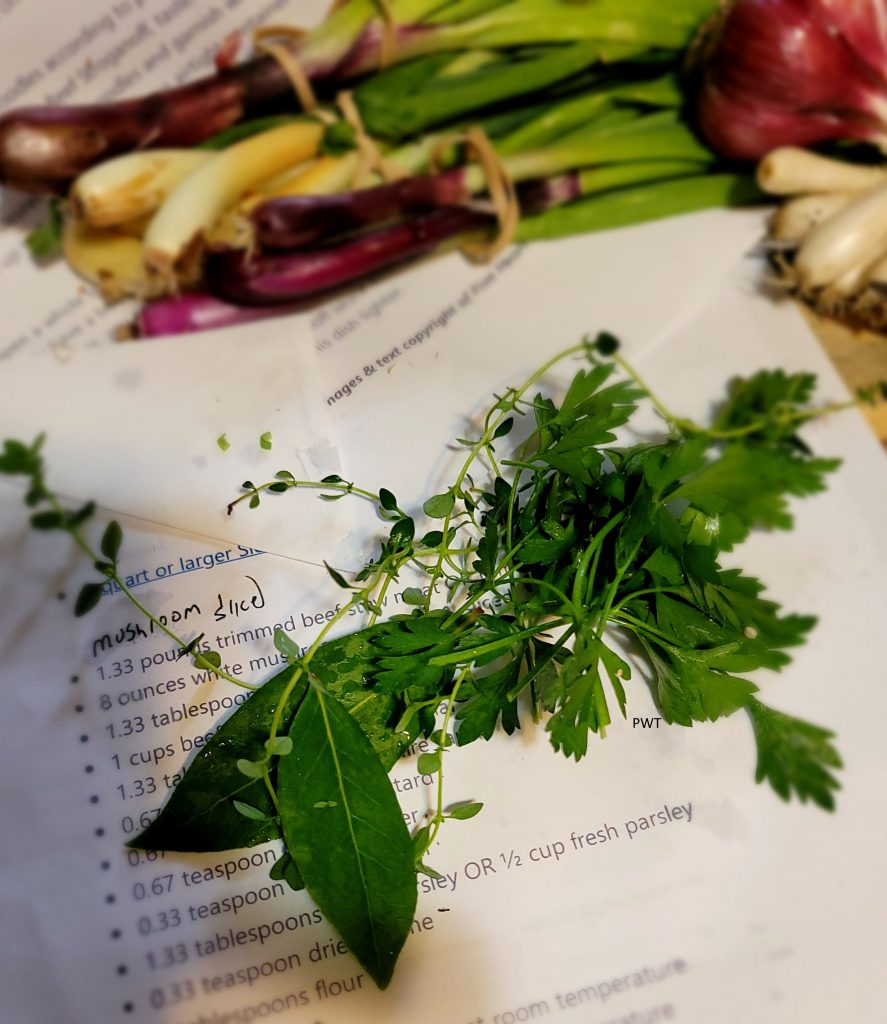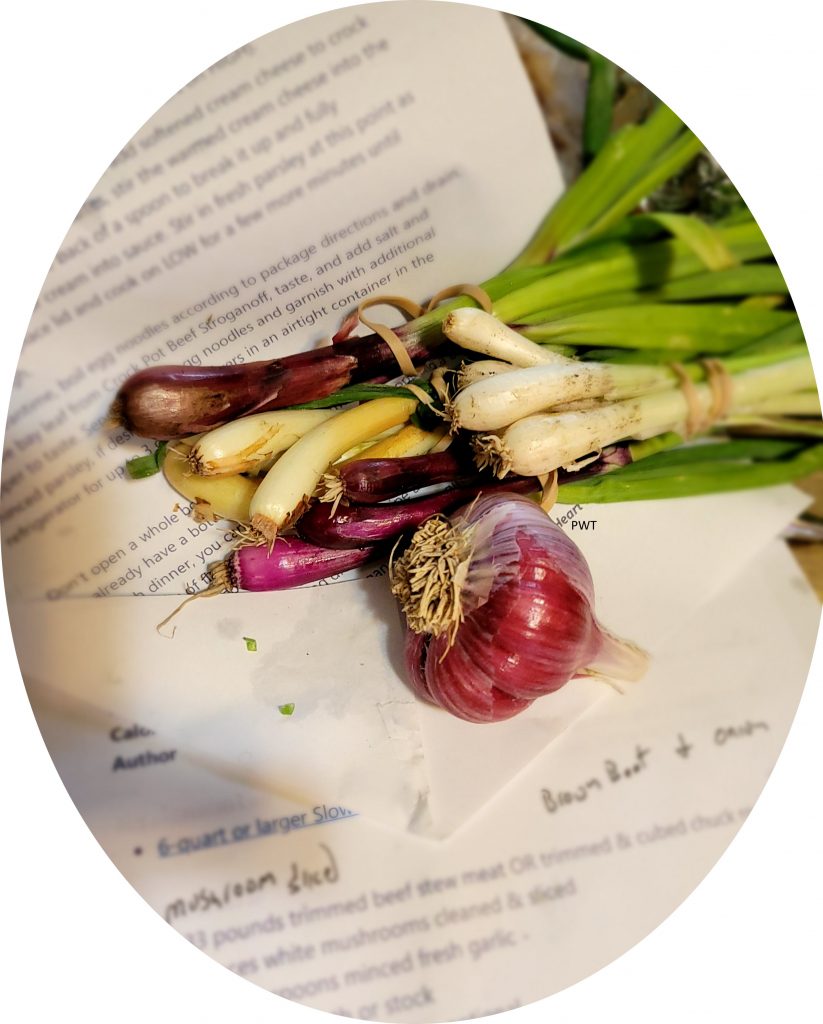govjadina po-strogonovski s gorchitseju Beef Stroganoff – fricassée de boeuf
Beef Stroganoff is believed to have originated in Russia in the mid-19th century. * or was it **”Beef Stroganoff is, in essence, the classic French fricassée de boeuf“*see below) The dish was named after the wealthy Stroganoff family, who played an important role in Russian history. It is said that the original version of the dish consisted of beef cooked in a sour cream sauce, which was then served over egg noodles.
Over time, different variations of Beef Stroganoff have emerged, and the dish has become popular in many parts of the world. Some versions include mushrooms and onions, while others use different types of meat, such as chicken or pork. In the United States, it is often served over rice or mashed potatoes instead of egg noodles.
Today, Beef Stroganoff remains a popular dish around the world and is often served at special occasions and celebrations. Its creamy and flavorful sauce makes it a comfort food favorite, and it is sure to satisfy anyone’s cravings for a hearty and delicious meal.
Another Version from https://www.britannica.com/topic/beef-Stroganoff Hence the UK Spellings. My Spell check is bleeding! 🙂
beef Stroganoff, dish of French origin by way of tsarist Russia that combines thinly sliced and lightly stewed beef and onions with sour cream and other ingredients.
Beef Stroganoff is, in essence, the classic French fricassée de boeuf with the addition of equally classic Russian ingredients: onions and sour cream. There is disagreement over which member of the noble Stroganov family was honoured with the name of the dish. One theory holds that the general and diplomat Pavel Alexandrovich Stroganov, or Stroganoff, while visiting France, was feted with a variation on the dish, which was made with a sauce of Dijon mustard instead of sour cream. A second theory ventures that Charles Brière, a French chef living in Russia, simply attached the name of the noble family, which owned much of Siberia while maintaining a palace in St. Petersburg, to the dish that in 1891 earned him the grand prize at a culinary competition in what was then the Russian capital. It is possible that Brière had worked for the Stroganov family earlier, but, to complicate matters, a cookbook published in St. Petersburg in the 19th century contains a recipe called govjadina po-strogonovski s gorchitseju, or beef Stroganoff with mustard, which lends support to the first theory while diminishing the claim that Brière was its originator. Read the rest of the story here
- My Version Ingredients:
- 1.50 pounds trimmed beef stew meat OR trimmed & cubed chuck roast (or Wild Game *Deer, etc…)
- 8 ounces white (or any safe-to-eat) mushrooms, cleaned & sliced
- 1.50 tablespoons minced fresh garlic
- 1 small sweet onion, cut into small pieces
- 2 cups beef broth or stock of choice
- 1.00 Tablespoon Good Soy sauce *(optional) *it adds salt!
- 3.00 tablespoons (1 glug) red wine *(optional)
- 1.00 tablespoon Worcestershire sauce
- 1.00 tablespoon Dijon mustard ***
- 1.00 teaspoon garlic powder or fresh
- 1.00 teaspoon onion powder or fresh
- 1.50 tablespoons dry parsley OR ½ cup fresh parsley
- 0.50 teaspoon thyme more if fresh *to taste
- 4 tablespoons flour
- 1.00 small bay leaf
- 3.00 ounces cream cheese or Mascarpone, at room temperature *(optional) This is the rich creamy layer. Omitting it creates a lighter version.
- 6.00 ounces sour cream, at room temperature
- Salt & freshly ground black pepper, to taste
- Dash of Kitchen bouquet *(optional)
- 5 drops of Liquid Smoke *(optional)
- Dash of Maggi seasoning *(optional)
- Dash of Everything Mushroom by BADIA *(optional)
- Egg noodles
My Version this time!:
**(Note: Some cooks add the sour cream and/or the cheese after cooking, just prior to serving. I add all ingredients in Step 1. so I included both versions of the steps, so pick accordingly!)
Instructions:
- Trim beef into strips or use cubed beef.
- Brown beef in a stovetop pan with a little oil. Transfer beef to the slow cooker. Wilt the onions in the same pan, then transfer to the slow cooker.
- Place beef, onion, red wine, mushrooms, thyme, parsley, Dijon mustard, Soy Sauce, and garlic in the slow cooker.
- In the same pan with low to med heat, I blend everything and stir until it starts to thicken, or a cold method is, in a bowl, no heat, mix together beef broth, Worcestershire sauce, garlic powder, onion powder, liquid smoke (use very little!), and flour. Whisk the mixture until the flour is completely dissolved.
- Pour it into the crock pot, and add the bay leaf and any remaining *Optional ingredients.
- Gently stir all ingredients until combined and coated. Place the lid on the crock pot and cook for 8 to 10 hours on LOW (or 4 to 5 hours on HIGH).
- **(You can wait until just before serving and then add cream cheese. Add softened cream cheese to the crock pot and replace the lid. After a few minutes, Blend the warm cream cheese in, I use a potato masher to blend it in. Mix sour cream into the sauce. Add parsley. Replace the lid and cook on LOW for a few more minutes until heated through.)
- Prepare egg noodles according to package directions and drain. (Optional: boil in stock).
- Remove the bay leaf from the Crock Pot Beef Stroganoff, taste, and add salt and pepper to taste. Serve over cooked hot egg noodles *or any starch of your choice (rice, potatoes, etc.) and garnish with parsley.
***The main factor that makes Dijon mustard different is the use of brown or black mustard seeds instead of yellow mustard seeds. Brown and black mustard seeds have a stronger, spicier flavor than yellow mustard seeds, which gives Dijon mustard its characteristic flavor profile.
Another factor that sets Dijon mustard apart is the use of verjuice or white wine in the recipe instead of vinegar. This gives the mustard a tangy, complex flavor that enhances the natural spiciness of the mustard seeds.
Grape must, or freshly pressed grape juice that contains the skins, seeds, and stems of the grapes, is not a traditional ingredient in Dijon mustard. While some manufacturers may use grape must as a flavoring agent, it is not a defining characteristic of Dijon mustard.
In summary, Dijon mustard is unique because of its use of brown or black mustard seeds and a blend of verjuice or white wine that creates a zesty, complex flavor that is distinct
These links help support this page. Please feel free to use my Affiliate links to shop Amazon and a few others! THANK YOU! . .You can find a much better price at your local store! look for it. . This is one of the best secret ingredients you can have in your pantry! . Another must have . . The ONLY brand to use is . . The Best . Another good one to have on hand . . . . Wow this one is nice looking! . This is a very nice setup! . . . .- the best list if ingredients, This was the primary base for my version! www.fivehearthome.com/slow-cooker-beef-stroganoff-no-cream-of-x-soup/
- This one is Solid. it’s a great basic version. www.foxvalleyfoodie.com/beef-stroganoff-from-scratch/
- This is the tried and tested version from the Betty C cookbook. www.bettycrocker.com/recipes/slow-cooker-beef-stroganoff/





